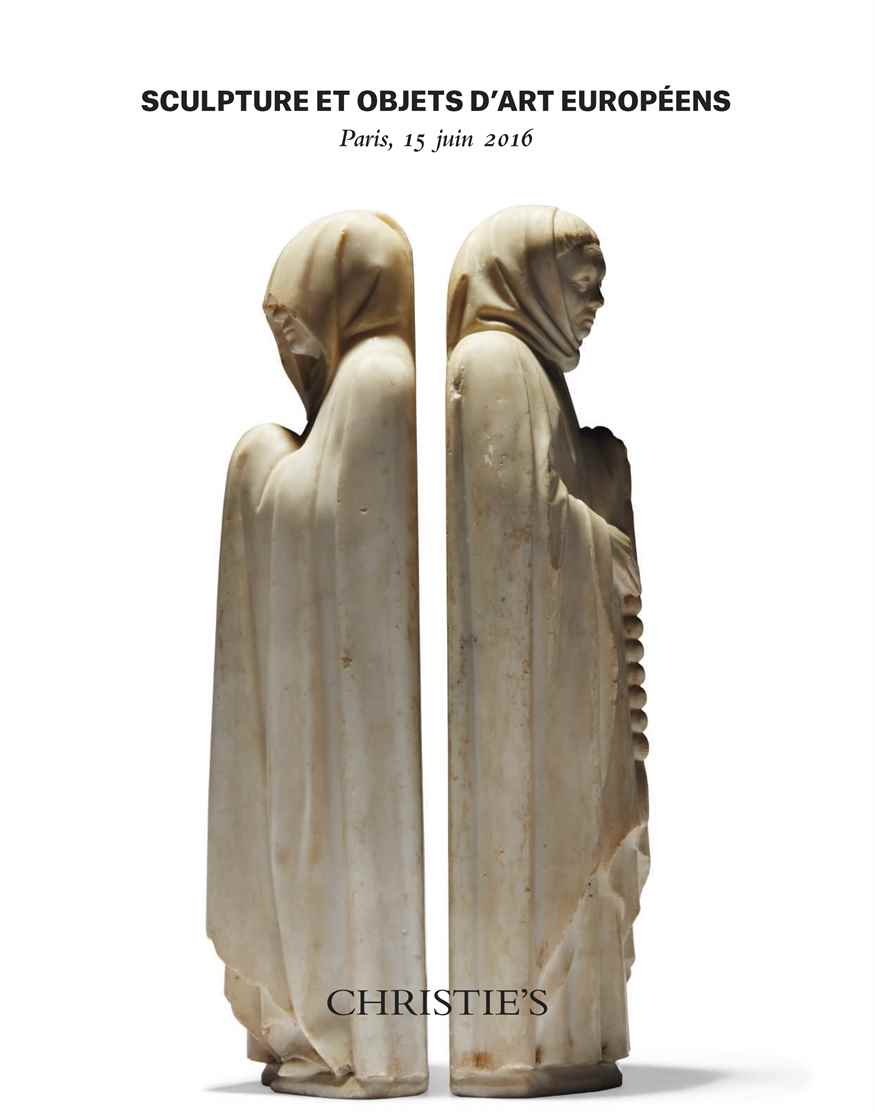Isabelle d’Amécourt, Head of the European Sculpture and Works of Art department: “In November 2013, two alabaster figures of Mourners from the same tomb sold for over €4M, marking a significant milestone. The sale on 15 June will offer a unique opportunity to acquire the last two marble Mourners from the same collection, and executed by Jean de Cambrai, one of the most important sculptor of his time”.
Jean de France was the third son of the French King Jean II le Bon (1319-1364), and considered one of the most prestigious patrons of his time. He set out to rebuild and renovate the castles on his main estates, and commissioned many important works of arts including the celebrated Très Riches Heures du duc de Berry, illuminated by the Limbourg brothers and displayed at the Condé Museum in Chantilly. The Holy Thorn Reliquary and Saint Agnes Cup, valued treasures of the British Museum in London, also came from his collection.
Following a tradition established by the French royal family, the duc de Berry commissioned his own tomb and appointed the sculptor Jean de Cambrai (died in 1438), a former collaborator of André Beauneveu (circa 1335-1400), to build it. The grave was to be built in the Sainte-Chapelle of the Ducal Palace at Bourges, and was designed with a life-size recumbent statue lying on a marble slab and a base decorated with a procession of forty mourners sheltered by architectural canopies. Jean de Cambrai executed the recumbent statue and five marble mourners, including ours, before Jean de France died in 1416, and any further construction had to be stopped. His grand-nephew and heir, King Charles VII, entrusted the completion of the mourners’ gallery circa 1450-1453 to Etienne Bobillet (active between 1416 and 1453) and Paul Mosselmann (active between 1441 and 1467). The present marble mourners were carved fully in the round, endowed with expressive faces and with contained postures, accentuated by vertical drapery folds, making them feel very contemporary.
The tomb was completed around 1453-59, and for three centuries lay in the center of the choir of the Sainte-Chapelle in Bourges. In 1756 the building was demolished and the duc de Berry’s tomb was moved into the cathedral’s crypt and likely sustained damage at that time. During the French Revolution, the tomb was vandalized: the architectural canopies were hammered, and the mourning figures ended up either destroyed or scattered. Only the black marble slab and the recumbent figure remained unscathed, and are still preserved within the cathedral of Bourges. To this day, twenty nine mourners have been identified. Most of them are kept in some of the most prestigious museums, including the Louvre, the Metropolitan Museum of Art and the Hermitage museum.
The mourners that will be offered at auction on 15 June 2016 are the last remaining marbles to be kept in private hands. They have been in the same family since 1807, and are considered a rare artistic display of medieval statuary.

No comments:
Post a Comment